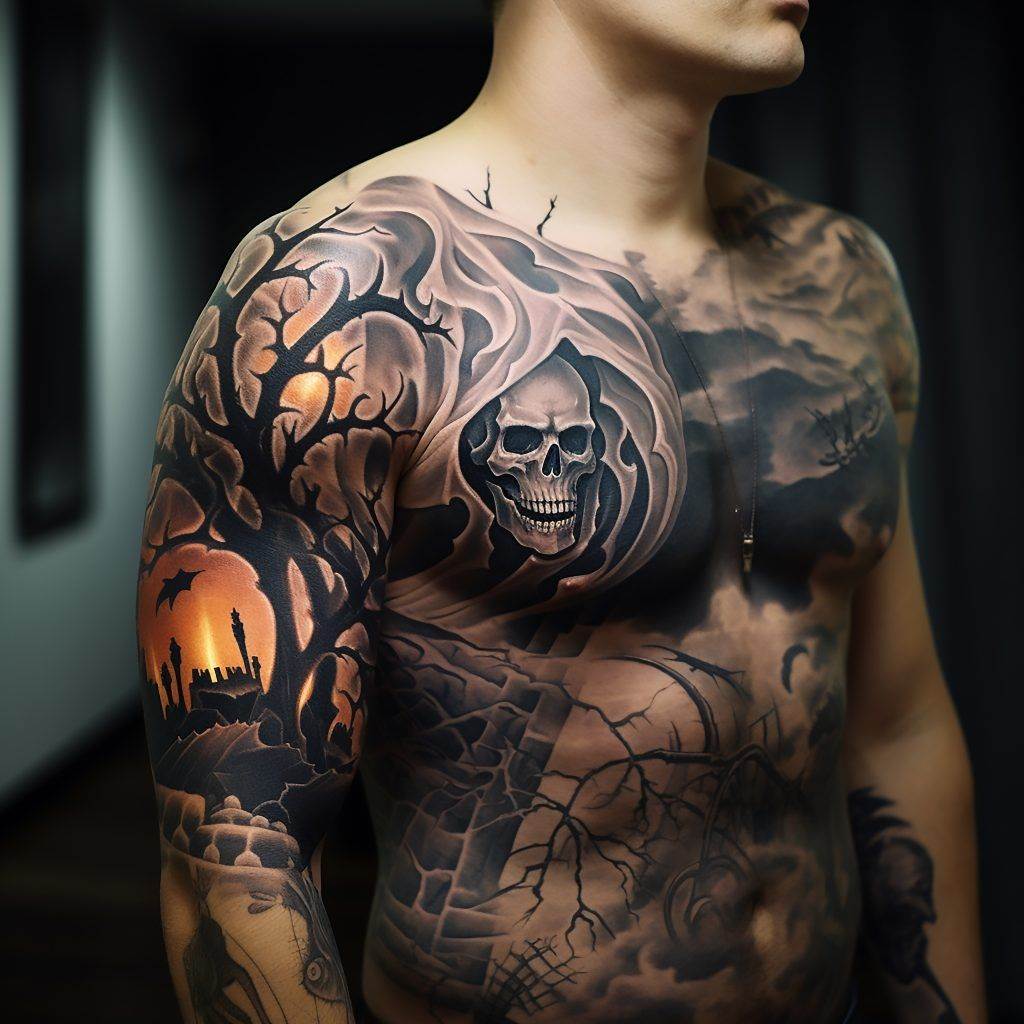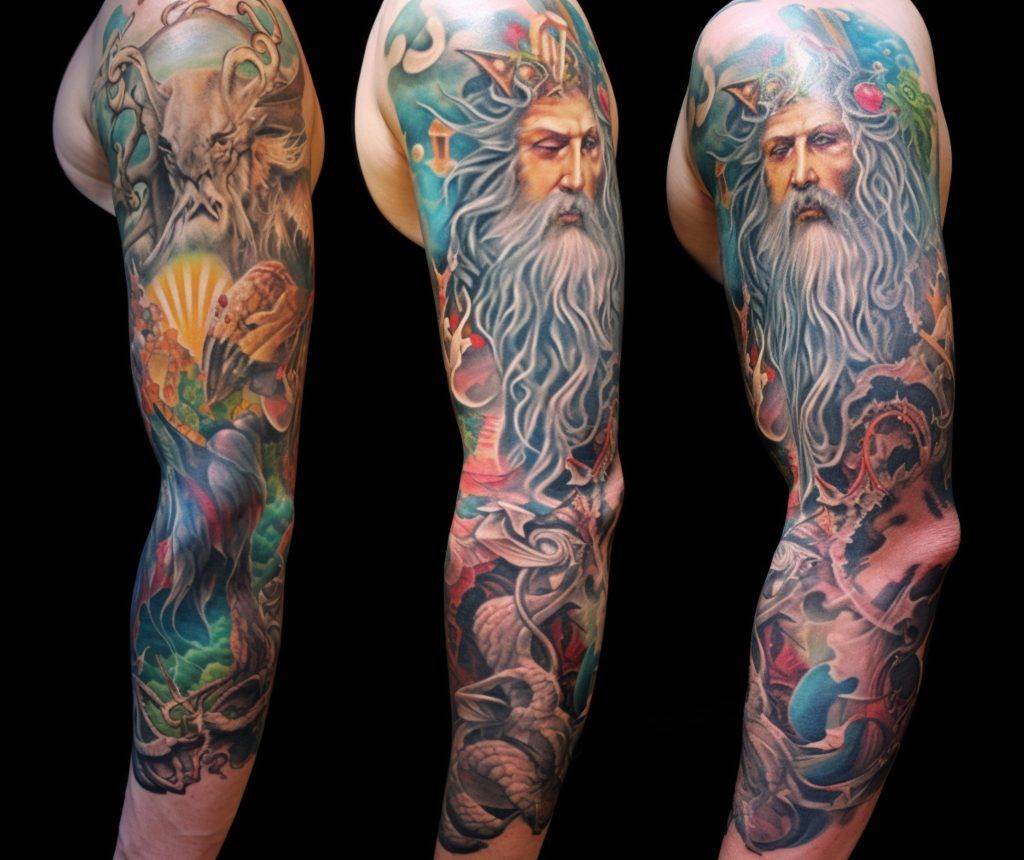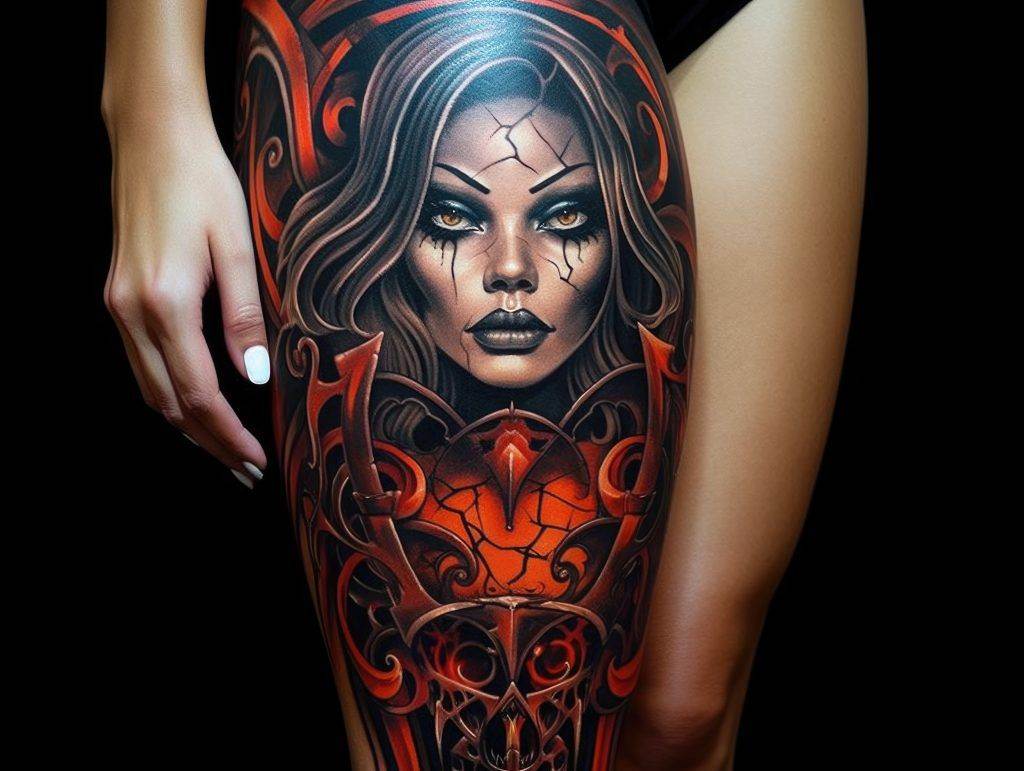UV-reactive ink, often referred to as glow-in-the-dark ink, is a specialized type of tattoo ink that becomes visible under ultraviolet (UV) light. Unlike traditional tattoo inks, which are designed to be visible in regular lighting conditions, UV-reactive inks contain phosphorescent materials that absorb light and then emit it when exposed to UV rays. This unique property allows tattoos to appear almost invisible in normal daylight but to glow brightly when illuminated by black lights or other sources of UV light.
This characteristic has made UV-reactive ink increasingly popular among those looking to add a distinctive flair to their body art. The appeal of UV-reactive tattoos lies not only in their aesthetic qualities but also in the element of surprise they offer. Many individuals appreciate the idea of having a tattoo that can be discreet during the day yet transform into a vibrant piece of art at night or in specific environments.
This duality allows for a more personal expression of identity, as the tattoos can be hidden or showcased depending on the setting. As the popularity of these tattoos grows, so does the interest in understanding their properties, applications, and implications.

Key Takeaways
- UV-reactive ink is a type of tattoo ink that glows under ultraviolet light.
- UV-reactive ink contains special pigments that react to UV light, causing them to glow.
- Safety concerns of UV-reactive ink tattoos include potential allergic reactions and long-term health effects.
- When choosing a design for a glow-in-the-dark tattoo, consider how it will look both in regular light and under UV light.
- Finding a skilled UV-reactive ink tattoo artist is important for achieving the desired glowing effect and ensuring proper application.
How Does UV-Reactive Ink Work?
The functionality of UV-reactive ink is rooted in its chemical composition. The ink contains phosphors, which are substances that exhibit the phenomenon of photoluminescence. When exposed to UV light, these phosphors absorb energy and then re-emit it as visible light.
This process is what creates the glowing effect associated with UV-reactive tattoos. The intensity and color of the glow can vary based on the specific formulation of the ink and the type of UV light used. In practical terms, when a tattoo artist applies UV-reactive ink, they are essentially embedding these phosphorescent materials into the skin.
The tattoo remains largely invisible under normal lighting conditions, allowing for a subtle appearance. However, when exposed to UV light, the tattoo reveals its vibrant colors and designs, creating a striking visual effect. This transformation can be particularly captivating in nightlife settings, such as clubs or parties, where black lights are commonly used.
The interplay between light and ink adds an exciting dimension to body art that traditional tattoos cannot replicate.
Safety Concerns and Risks of UV-Reactive Ink Tattoos

While UV-reactive ink offers unique aesthetic benefits, it is essential to consider the safety concerns associated with its use. One primary concern is the potential for allergic reactions or skin irritations caused by the chemical components in the ink. Some individuals may have sensitivities to certain pigments or additives used in UV-reactive formulations, leading to adverse reactions that can manifest as rashes, itching, or swelling.
It is crucial for anyone considering a UV-reactive tattoo to consult with a qualified tattoo artist who can provide information about the specific inks being used and any potential risks. Another significant concern is the long-term effects of having UV-reactive ink embedded in the skin. While many tattoo inks are regulated for safety, not all UV-reactive inks undergo the same scrutiny.
Some inks may contain heavy metals or other harmful substances that could pose health risks over time. Additionally, there is limited research on how these inks behave in the body over extended periods. Therefore, individuals should conduct thorough research and choose reputable artists who prioritize safety and use high-quality inks that comply with health regulations.
Choosing a Design for a Glow-in-the-Dark Tattoo
Selecting a design for a UV-reactive tattoo requires careful consideration to ensure that it not only looks appealing under normal lighting but also shines brightly under UV light. Many people opt for intricate patterns or designs that incorporate elements of both visible and invisible art. For instance, a design might feature bold outlines that are visible in daylight while incorporating finer details that come to life under black light.
This duality can create a stunning visual experience that captivates both the wearer and onlookers. When choosing a design, it is also essential to think about personal significance and symbolism. A tattoo is often a reflection of one’s identity or experiences, so selecting imagery that resonates on a deeper level can enhance the overall meaning of the piece.
Additionally, considering how the design will interact with different lighting conditions can lead to more creative choices. Collaborating with a skilled tattoo artist can help refine ideas and ensure that the final design will achieve the desired effect both day and night.
Finding a Skilled UV-Reactive Ink Tattoo Artist
Finding an experienced tattoo artist who specializes in UV-reactive ink is crucial for achieving high-quality results. Not all tattoo artists are familiar with this type of ink, so it is essential to seek out professionals who have demonstrated expertise in working with glow-in-the-dark tattoos. Researching local artists, reviewing their portfolios, and reading client testimonials can provide valuable insights into their skills and experience.
When meeting with potential artists, it is important to discuss their approach to using UV-reactive ink and any specific techniques they employ to ensure safety and quality. A knowledgeable artist will be able to explain their choice of inks, discuss potential risks, and offer guidance on design options that will work well with this unique medium. Establishing open communication with the artist can help build trust and ensure that your vision for the tattoo is realized effectively.
Aftercare and Maintenance of UV-Reactive Ink Tattoos

Proper aftercare is essential for maintaining the vibrancy and longevity of UV-reactive tattoos. Like traditional tattoos, these require careful attention during the healing process to prevent infection and ensure optimal healing. After getting a UV-reactive tattoo, it is crucial to follow your artist’s aftercare instructions closely.
This typically includes keeping the area clean and moisturized while avoiding direct sunlight and soaking in water for an extended period. Once healed, maintaining the brightness of a UV-reactive tattoo involves protecting it from excessive sun exposure. Prolonged exposure to sunlight can fade any tattoo over time, but this effect may be more pronounced with UV-reactive inks due to their unique chemical properties.
Applying sunscreen to the tattooed area when spending time outdoors can help preserve its vibrancy and prevent premature fading. Regular touch-ups may also be necessary to keep the design looking fresh and bright.
Potential Health Effects of UV-Reactive Ink
The potential health effects of UV-reactive ink are an important consideration for anyone contemplating this type of body art. While many people enjoy their tattoos without experiencing adverse effects, there are inherent risks associated with any form of body modification. Some individuals may develop allergic reactions or sensitivities to specific pigments used in UV-reactive inks, leading to skin irritation or other complications.
Moreover, there is ongoing debate regarding the long-term safety of certain chemical components found in some tattoo inks, including those used for UV-reactive designs. While regulatory bodies have made strides in ensuring ink safety, not all products are created equal. It is vital for consumers to remain informed about the ingredients in their chosen inks and to prioritize artists who use high-quality materials that comply with health standards.
The Future of UV-Reactive Ink in the Tattoo Industry
As technology advances and artistic trends evolve, the future of UV-reactive ink in the tattoo industry appears promising. With increasing interest in unique body art forms, more artists are likely to experiment with innovative techniques and formulations that enhance the properties of UV-reactive inks. This could lead to new colors, improved safety standards, and more versatile applications within tattoo artistry.
Additionally, as awareness grows regarding the importance of safety and quality in tattoo inks, consumers may become more discerning about their choices. This shift could encourage artists to prioritize using reputable brands that adhere to health regulations while also pushing for greater transparency within the industry regarding ink ingredients and potential risks. Ultimately, as both artists and clients continue to explore the possibilities offered by UV-reactive tattoos, this niche within body art may become more mainstream while maintaining its unique allure.
FAQs
What is UV-reactive ink?
UV-reactive ink is a type of tattoo ink that glows under ultraviolet (UV) light. It is also known as glow-in-the-dark ink and is often used to create tattoos that have a unique glowing effect.
How does UV-reactive ink work?
UV-reactive ink contains special pigments that are designed to react to UV light. When exposed to UV light, such as black light, the ink emits a visible glow, creating a striking effect.
Is UV-reactive ink safe for tattoos?
UV-reactive ink is generally considered safe for use in tattoos. However, as with any tattoo ink, it is important to ensure that the ink is used by a professional tattoo artist who follows proper safety and hygiene practices.
How long does UV-reactive ink last?
The longevity of UV-reactive ink tattoos can vary depending on factors such as the quality of the ink, the skill of the tattoo artist, and how well the tattoo is cared for. In general, UV-reactive ink tattoos may fade over time and may require touch-ups to maintain their glowing effect.
Are there any risks or concerns associated with UV-reactive ink tattoos?
Some concerns have been raised about the long-term safety of UV-reactive ink tattoos, particularly regarding the potential for the ink to cause adverse reactions or health issues. It is important to carefully consider the potential risks and consult with a professional tattoo artist before getting a UV-reactive ink tattoo.
Can UV-reactive ink tattoos be removed?
UV-reactive ink tattoos can be removed using laser tattoo removal techniques, similar to the removal of traditional tattoos. However, the glowing effect of the UV-reactive ink may not be fully removed, and multiple laser treatments may be required to achieve the desired results.
